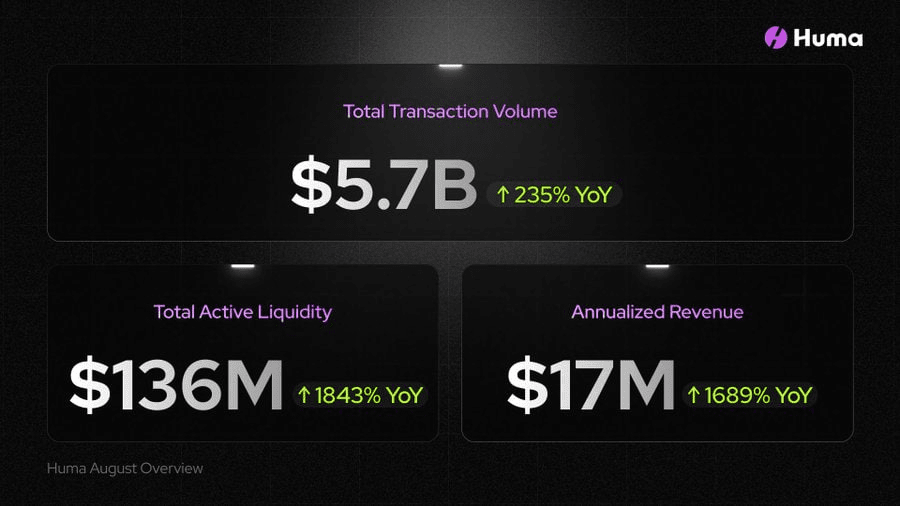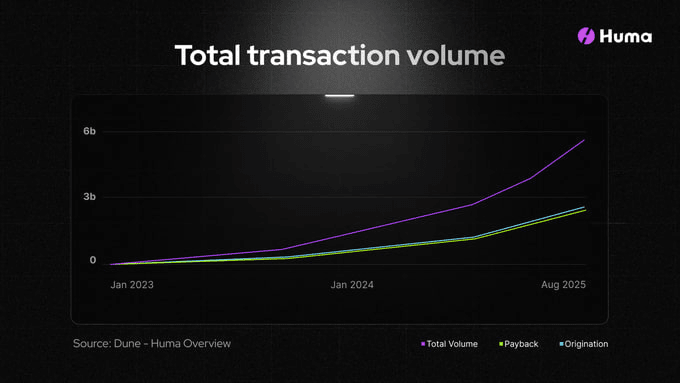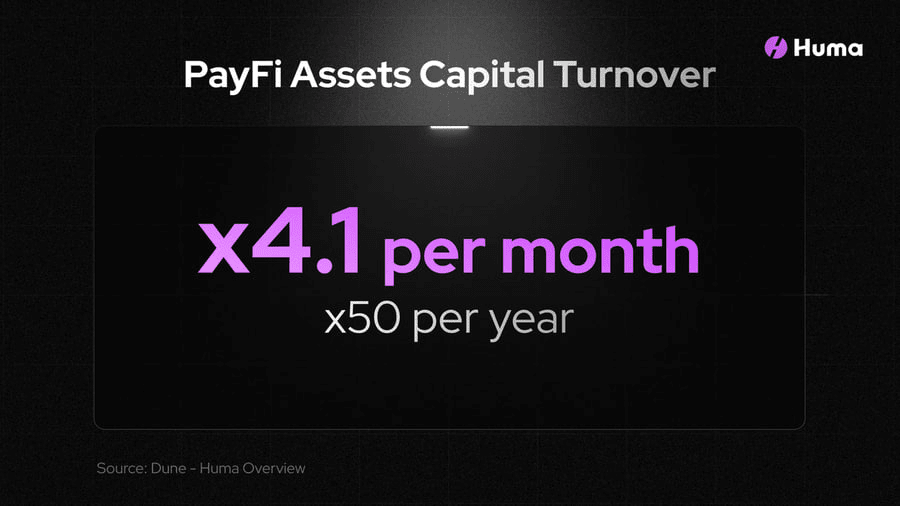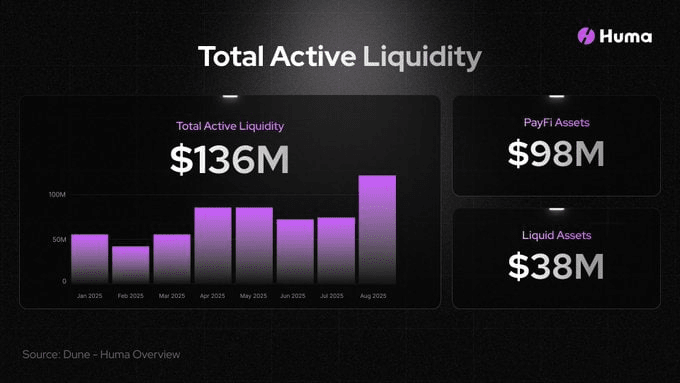⚡️ Friends, in the past few months, if I had to say which project is running the fastest on Solana, the first one that comes to mind is @humafinance.
Since the release of version 2.0 on April 9, it officially launched on the Solana mainnet. From that moment on, the entire protocol has accelerated, with data skyrocketing and core metrics experiencing explosive growth.
👇👇👇
I. Overview of core data
▌Total transaction volume: from 1.7 billion US dollars last year to 5.7 billion US dollars this year, a year-on-year increase of 3.4 times.
▌Total active liquidity: from 7 million US dollars to 136 million US dollars, a year-on-year increase of 19.4 times.
▌Annual income: Set a new high of 17 million US dollars, soaring 16 times year-on-year.
▌PayFi assets: Monthly growth of 50%, reaching 98 million US dollars.

▌Goal: Achieve a total transaction volume of 10 billion US dollars by the end of 2025.

II. Why Huma 2.0 will explode
1. Changes in the macro environment
In recent years, traditional finance has always taken a wait-and-see attitude towards on-chain payments and stablecoins. Mainly due to policy uncertainties, many institutions want to eat but dare not reach for it. Now that stablecoin regulation is gradually clarified, it's like giving financial institutions a green light, and compliant stablecoins have become the key entry point for them into Web3 payments.
2. Model advantages: Extreme capital efficiency
In traditional finance, a fund pool's annual turnover rate of 5-10 times is considered efficient. In contrast, Huma protocol's fund turnover rate is close to 50 times, meaning that 1 dollar of liquidity can generate 50 dollars in payments over a year.
This directly brings two benefits: the same funds can support larger-scale transaction settlements. The real yield generated by the protocol is sustainable and compound growth.

3. Top-tier partners and gameplay enhancement
Huma does not just passively wait for business to come in; it actively binds with quality protocols. For example, the circular strategy developed in collaboration with Kamino, where USDC (classic) is deposited into Huma, and PST is exchanged. PST is then collateralized to Kamino to borrow USDC, which is deposited back into Huma to exchange for more PST.
With this round after another, the leverage can reach 5.87 times. For those who understand the gameplay, this is almost a paradise for feather farms.
III. Why do institutions choose Huma
From the perspective of institutions, on-chain payment protocols must meet three key requirements: high capital utilization, the ability to achieve rapid fund circulation; low risk, especially in compliance and settlement aspects; and the capability for large-scale operations to support significant payment and financing needs in the real world.
Huma precisely balances these three points, with rapid capital turnover, a compliant stablecoin entry, and design specifically targeting real payment scenarios. This is also the reason for its rapid data curve increase after launching on Solana 2.0, almost achieving a 45-degree slope.

IV. Conclusion
The explosive growth of Huma 2.0 is the result of the macro environment, model advantages, and ecosystem cooperation overlapping. It is not only the first PayFi protocol in Web3 but also one of the few projects that have scaled real yield into a business.
If it can continue to expand its partner ecosystem, this track may be completed halfway ahead of time. Each subsequent data update could bring new surprises.


